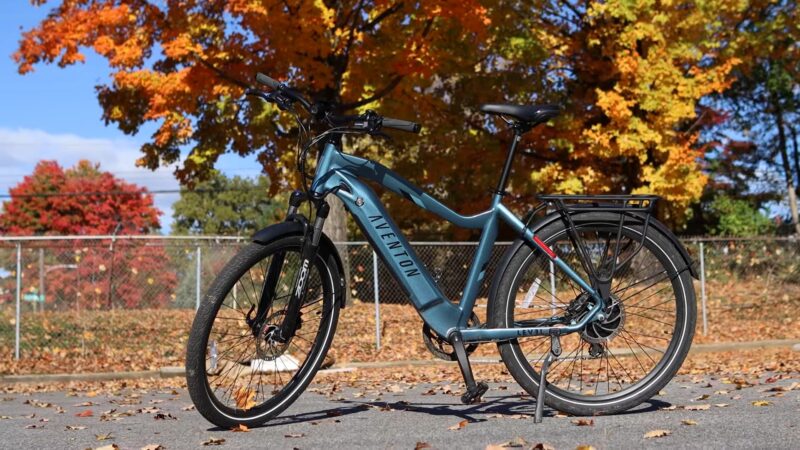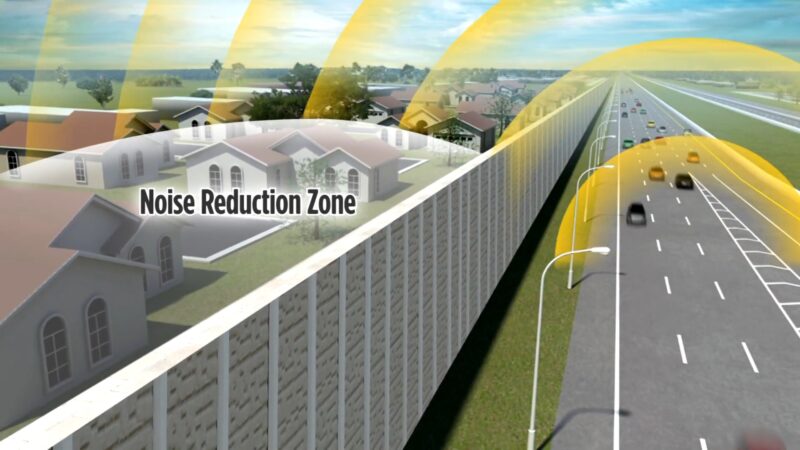Walking around my neighborhood, I noticed a lot of noise from cars, building work, and other city sounds. It’s really busy and loud, but it got me thinking: what can we do to make things quieter? Reducing disturbance is important not just for our peace of mind but for our health too.
I was really curious to find out the best way we can help our community be less noisy. Maybe it’s something we can do ourselves, or perhaps we need to work together as a community or use new technology.
I was excited to learn about different ways to make our neighborhood a more peaceful place and today I’m sharing my findings with you.
Individual Actions
Combating noise pollution is not just a communal but also an individual responsibility. Here are some steps that individuals can take to contribute to a quieter community:
1. Modify Personal Behavior
Personal habits and choices can significantly impact local disturbance levels:
- Reducing Volume: Keeping the volume of TVs, music, and other devices at a considerate level can make a big difference, especially in shared living spaces like apartment buildings. It’s about being mindful of how our activities might affect others.
- Using Earplugs: In loud environments, using earplugs can protect your hearing and help you maintain your focus, whether you’re at a concert or in a noisy work setting.
- Soundproofing: Adding insulation to walls, installing soundproof windows, and using heavy curtains can greatly reduce the amount of outside noise entering your home. This not only creates a quieter environment inside but also contributes to energy efficiency.
2. Advocate for Change
Getting involved in community efforts and policy-making can lead to broader changes: Join community groups or attend town hall meetings to discuss these issues. Being part of these discussions is crucial for understanding different perspectives and finding balanced solutions.
Advocate for local laws that address noise pollution, like stricter regulations on construction noise and vehicle emissions. You can do this by writing to local representatives or supporting campaigns that focus on disturbance reduction.
Additionally, sharing information about the effects of noise pollution can raise awareness among your peers. This could be through social media, community newsletters, or informal discussions. The more people are aware, the more likely they are to take action.
3. Adopt Quieter Technologies

Choosing technologies that produce less disturbance can have a significant cumulative effect:
Electric Vehicles
These vehicles are much quieter than traditional gasoline-powered cars. Their widespread adoption can drastically reduce traffic noise in residential areas.
Quieter Appliances
Opt for appliances and tools that are designed to operate quietly. This not only benefits your immediate environment but also contributes to a broader culture of noise consciousness.
Landscaping
Planting trees and shrubs can act as natural sound barriers, absorbing and deflecting disturbance. This not only helps reduce noise pollution but also enhances the aesthetic and ecological value of your living space.
Community-Led Initiatives

Addressing noise pollution at a community level involves a coordinated approach that includes planning, policy, and public participation.
Develop Disturbance Regulations
Communities can implement and enforce regulations that specifically target noise pollution:
- Noise Ordinances: Local governments can enforce noise ordinances that set limits on acceptable disturbance levels, particularly during night hours. These laws need to be clearly communicated and consistently enforced to be effective.
- Zoning Laws: Proper zoning can minimize the impact of disturbance on residential areas. This includes designating specific areas for industrial and commercial use, thus creating a buffer between noise sources and homes.
- Traffic Control: Measures like traffic calming, promoting public transportation, and creating pedestrian-only zones can significantly reduce traffic noise. This not only makes for a quieter environment but also a safer and more pleasant one.
Urban Planning and Design
Thoughtful design and planning can play a significant role in reducing disturbance. Creating parks and green belts can help absorb and deflect sound. These areas provide a dual benefit of noise reduction and recreational space for residents.
Also, erecting barriers along highways and busy roads can significantly reduce disturbance entering residential areas. These can be made of a variety of materials and can also be aesthetically pleasing.
Encouraging building designs that incorporate sound-reducing elements can greatly mitigate the impact of external disturbance. This includes features like soundproof windows, strategic building orientation, and the use of noise-absorbing materials.
How to Raise Public Awareness?
Educating the public about noise pollution and its impacts is crucial for long-term change. Conduct campaigns to educate the public about the effects of this problem and ways to reduce it. This could include distributing informational pamphlets, organizing workshops, or using social media platforms.
Develop community programs that promote quieter activities and lifestyles. This could involve organizing quiet community events, promoting ‘quiet hours,’ or creating noise-free zones.
Work with local businesses, schools, and other institutions to develop noise reduction strategies. This can include disturbance reduction commitments from businesses and educational programs in schools.
FAQs
Can planting specific types of trees or plants help in reducing noise pollution more effectively?
Yes, certain trees and plants are more effective in absorbing and blocking disturbance. Evergreen trees, with their dense foliage year-round, are particularly effective. Plants like hedges and thick shrubs can also act as sound barriers.
The key is to choose species that grow densely and can form a thick barrier at ear level.
How can small businesses contribute to reducing noise pollution in their communities?
Small businesses can play a significant role by adopting quieter operating practices. This includes maintaining equipment to ensure it runs smoothly and quietly, using sound-dampening materials in their spaces, and keeping doors and windows closed when using loud machinery.
Additionally, they can follow and advocate for quiet delivery practices, like using electric vehicles or scheduling deliveries during less disruptive times.
Are there any cost-effective methods for soundproofing homes against external noise?
Yes, there are several cost-effective methods. Sealing gaps and cracks in walls and windows can significantly reduce noise infiltration. Using thick curtains, rugs, and wall hangings can also help absorb sound.
Another affordable option is to use DIY window inserts made from acrylic or glass, which can add an extra layer of sound insulation.
Can community noise monitoring have any legal implications? How is this data used?
Community monitoring can have legal implications, especially if it identifies consistent violations of local noise ordinances. This data can be used by local authorities to enforce disturbance regulations more effectively.
It can also inform city planners and policymakers in making informed decisions about urban development and disturbance management strategies.
How does noise pollution affect wildlife, and what measures can be taken to protect them?
Noise pollution can disrupt the natural behavior and communication of wildlife, affecting mating calls, territory establishment, and predator-prey dynamics.
To protect wildlife, communities can establish quiet zones near natural habitats, limit noisy activities during critical times for wildlife (like breeding seasons), and create green corridors to provide safe, quiet spaces for wildlife movement.
Summary
In wrapping up, the key to reducing noise pollution in our community lies in a combined effort. It’s clear that there isn’t just one perfect solution. Instead, it’s about each of us doing our part, whether that’s being more mindful about the noise we make or getting involved in community projects.
By working together and considering all these different strategies, we can make our neighborhood quieter and a better place to live for everyone. It’s a team effort and every small step counts.
